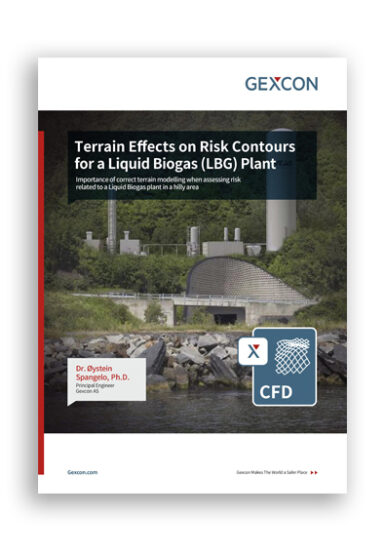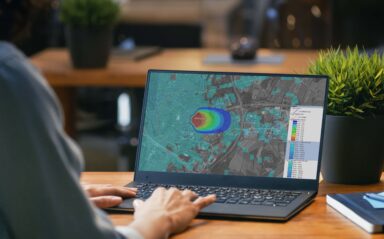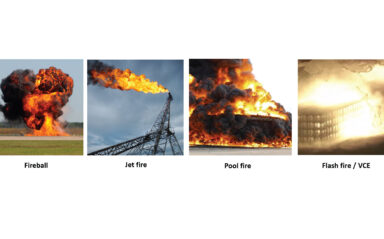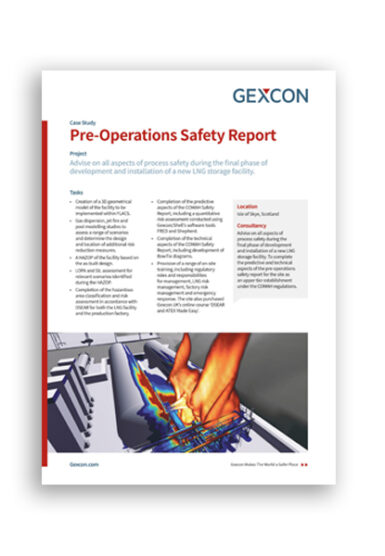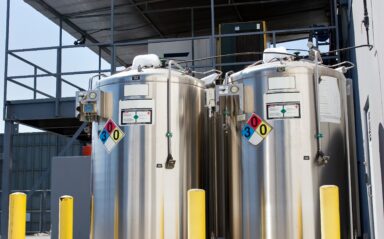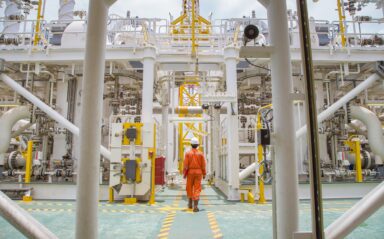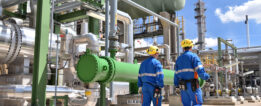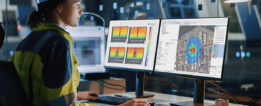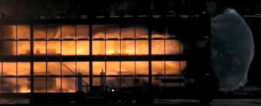Understand the potential risks of your new or existing facilities with Gexcon’s comprehensive Liquified Natural Gas (LNG) safety solutions.

Engineering software for safety and design optimization
Perform your safety studies with authoritative consequence and risk modelling software.
FLACS-CFD (3D consequence modelling tool)FLACS-CFD is an advanced tool capable of simulating LNG spills on water or land into sumps and trenches and pressurised, flashing jet releases. FLACS-CFD provides a computational environment where users can track the LNG source term’s evolution (LNG pool or flashing jet) and of the resulting vapour cloud simultaneously. The effect of terrain and obstructions is incorporated for a realistic simulation of the entire accident scenario.
|
|
 |
EFFECTS & RISKCURVES (2D consequence modelling and QRA tool)EFFECTS & RISKCURVES are perfectly equipped to model LNG related scenarios. Its internal consequence models, like pool evaporation (also from water), pool fire and (heavy) gas dispersion have been validated against experimental values, providing trustworthy and realistic results.
|
 |
Shell FRED & Shell Shepherd (2D consequence modelling and QRA tool)For more than 40 years, Shell FRED & Shell Shepherd have been developed by Shell’s engineers who understand first-hand the need for accurate results and actionable outputs. Shell has performed numerous large-scale experiments, including LNG, for validation purposes to ensure users obtain reliable results.
|
Consulting services for a safe and regulatory compliant LNG facility
Gexcon Consulting offers a full spectrum of safety studies for LNG facilities. Our consultants have experience working with various types of LNG facilities, and from all parts of the facility life cycle. They are also expert users of the Gexcon software products and can give advice on what tools are appropriate for your safety study.
Key services include:
-
Early-stage risk analysis to identify potential hazards
-
Full facility risk analysis to map risk exposure on-site and off-site
-
Verification of safety studies to make sure they comply with relevant regulations
-
Detailed modelling of LNG release consequences
Incident investigation
Understand the causes of incidents or near misses to prevent similar accidents from reoccurring in the future. Gexcon can help with all aspects of incident investigations, from coordinating the investigation to conducting root cause analysis, providing recommendations, implementing strategies to prevent further incidents from occurring, and acting as expert witnesses in ongoing investigations.
Product testing for certification
Manufacturers of equipment and protective systems used in explosive atmospheres need to comply with certain regulations (such as ATEX or CSA) to sell their products to the market. Our testing facilities allow for equipment manufacturers to assess their products’ ability to prevent them from becoming an ignition source and their ability to protect against the consequences of explosions.
Passive Fire Protection (PFP) testing
Gexcon’s PFP testing can help you assess the fire resistance of PFP products to be used on pipes, valves, structural elements, etc. The test simulates a jet fire caused by a leak in a pipe that contains flammable fuel at high pressure.
Courses for upskilling your team in process safety and risk management
Expand your team’s skills to improve productivity and meet your company quality standards with Gexcon’s process safety and risk management courses. Available topics include:
- Hazards Associated with Small Scale LNG Installations
- Self-Declaration of Mechanical Equipment to be Used in Flammable Atmospheres
- Hazardous Area Classification

